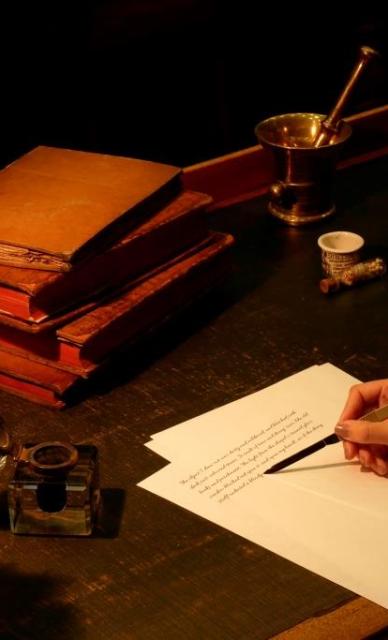Physicians' Gallery Newsletter
Updates on upcoming events, exhibitions and online stories
Empowering medical excellence, shaping healthcare futures.
This blog was developed to accompany the exhibition Wild & Tame: Animals in History which ran from 19 July 2024 to 9 May 2025.
Caring for animals, treating them and curing them, has been essential to human survival for thousands of years. Human reliance on animals for food, load-bearing work and transportation meant that animal wellbeing has always been key to human wellbeing.
Domestication, the process of humans taking control of an animal and its food source, has completely changed the relationship between animals and humans. The first domesticated animals were dogs, more than 15,000 years ago, trained for hunting and protection. They were followed by sheep, cows and goats which provided food and clothing. Some animals, including chickens and horses, were domesticated in East Asia long before Europe.
In medieval Europe animals were treated using traditional folk cures, magic spells, plants and other natural elements, like salt and soot. Horses were looked after by farriers and cattle by ‘cowleeches’. The formalisation of veterinary medicine began in the 1700s when veterinary schools began to be established across Europe. The first veterinary school in Scotland was founded in Edinburgh in 1823.

Bloodletting has been used for millennia to treat both humans and domestic animals. Ancient physicians believed that blood was one of four humours in the body (along with phlegm, yellow bile and black bile) and that any imbalance of these humours would cause disease. Bleeding would then restore the balance and good health.
Animal skin is usually thicker and harder to cut than human skin. Fleams, like this one for cutting animals, usually contained several blades. These blades were an improvement on the earlier use of fish teeth or sharp stones to cut through the skin.
In veterinary medicine today, blood is taken from animals to diagnose diseases, just as in human medicine.

First published in 1598, this book on the horse anatomy is the first book on the anatomy of any animal other than humans. The first ‘modern’ human-anatomy book by Flemish physician Andreas Vesalius was published only 55 years earlier. Vesalius placed his models in front of idyllic landscapes and Carlo Ruini followed the same style by placing this horse in a country landscape. The status of the horse as a ‘noble beast’ is reflected everywhere in the history art – on paintings, statues and monuments that show the symbiotic relationship between the rider and the horse.
Ruini was a high-ranking Bolognese aristocrat, lawyer and senator who had no medical background, but loved horses and believed that to care for them meant knowing every detail about their bodies.

This instrument in one of a series of patented domestic machines developed by surgical instrument maker John Read. They were designed to be used on both humans and animals ‘for cleansing the bowels at home’.
Read made instruments for the British Army and the East India Company. He patented this machine for use in ‘extracting poison from the stomach, administering clysters, introducing tobacco fumes into the bowels, draining of the urine, administration of food and medicine…&c.’
The efficacy of the pump was tested on a dog in 1823 in Guy’s Hospital in London. The dog was given enough opium to kill it and the pump was then used to empty the stomach. The pump removed all the opium and the dog survived.

Horses were particularly valuable possessions and indicated status and wealth. They were looked after by farriers who were skilled in shoeing horses and were generally better educated than ‘cow-leeches’ who looked after other domestic animals. This is one of the first books on the care of horses with medical recipes and surgical procedures. The front page shows farriers at work – feeding, letting blood, dressing wounds.
For the cure ‘of the biting with a mad Dogge’, Markham recommends covering the wound with goat dung, elderwort and 40 walnuts, all crushed together making a paste.
Markham wrote on other domestic subjects – cooking, planting, hunting, brewing beer and distilling perfumes. These types of books were written as practical guides in English and were popular and accessible to people who did not know Latin.

Trepanning is a surgical procedure which involves drilling a hole in the skull. It was practiced by many societies throughout history, and a similar procedure called craniotomy is used today to relieve pressure or expose the brain to perform brain surgery. The earliest evidence of trepanning comes from human skulls found at Neolithic sites around the world.
A recent discovery of a trepanned cow skull was also dated to the Neolithic period (around 12,000 years ago). It is not clear whether the trepanning was performed to save the cow or to practise the procedure before it was used on humans.
If it was done to cure the cow, then it is the earliest evidence of veterinary surgery. If not, it is the earliest evidence of animal experimentation to practise trepanation.

Updates on upcoming events, exhibitions and online stories